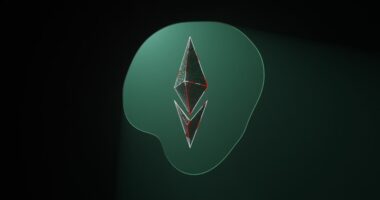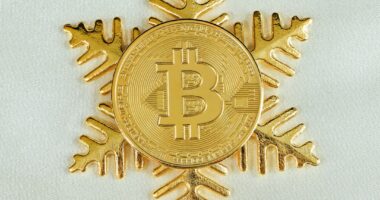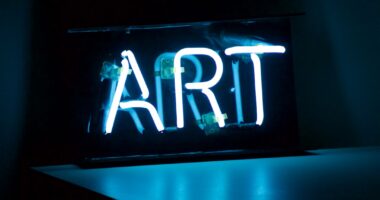Digital art has undergone a remarkable transformation since its inception, evolving from rudimentary computer graphics to sophisticated, immersive experiences that challenge traditional notions of creativity. In the early days, digital art was primarily characterized by pixelated images and simple animations, often created using basic software tools. Artists experimented with the capabilities of early computers, producing works that were often viewed as novelties rather than serious artistic endeavors.
The advent of more advanced software in the 1990s, such as Adobe Photoshop and Corel Painter, allowed artists to explore new techniques and styles, leading to a burgeoning digital art movement. As technology progressed, so did the complexity and depth of digital art. The introduction of high-resolution displays and powerful graphic processing units enabled artists to create intricate pieces that rivaled traditional media.
The rise of the internet further facilitated the sharing and distribution of digital art, allowing artists to reach global audiences without the constraints of physical galleries. Online platforms emerged, providing spaces for artists to showcase their work and connect with collectors. This democratization of art led to a diverse range of styles and genres, from digital painting and 3D modeling to generative art and interactive installations.
The evolution of digital art has not only expanded the boundaries of artistic expression but has also paved the way for new forms of ownership and monetization, culminating in the rise of non-fungible tokens (NFTs).
Key Takeaways
- Digital art has evolved from traditional forms to include NFT characters, which are unique digital assets stored on the blockchain.
- NFT characters are digital art pieces with unique ownership and provenance, allowing artists to sell and collectors to buy and trade them using cryptocurrency.
- NFT characters have disrupted the art world by providing new opportunities for artists to monetize their work and for collectors to invest in digital art.
- Artists are changing their creative and selling processes to adapt to NFT characters, embracing digital tools and platforms for creating and selling art.
- Blockchain technology plays a crucial role in NFT characters by providing a secure and transparent way to verify ownership and authenticity of digital art.
What Are NFT Characters?
NFT characters are unique digital assets that represent specific characters or personas within the realm of non-fungible tokens. Unlike traditional digital art, which can be easily replicated, NFT characters are built on blockchain technology, ensuring their authenticity and ownership. Each NFT character is encoded with distinct metadata that verifies its uniqueness, making it impossible to duplicate or forge.
This characteristic has made NFT characters highly sought after by collectors and fans alike, as they offer a way to own a piece of digital culture that is verifiably scarce. These characters can take many forms, ranging from stylized avatars in video games to intricate designs created by digital artists. Some NFT characters are part of larger ecosystems, such as virtual worlds or gaming platforms, where they can be used for various purposes, including gameplay, social interaction, or as collectibles.
The appeal of NFT characters lies not only in their artistic value but also in their potential for utility within digital environments. For instance, a character might grant access to exclusive content or experiences within a game, enhancing its desirability among players and collectors. As the market for NFT characters continues to grow, they are becoming an integral part of the broader digital art landscape.
The Impact of NFT Characters on the Art World

The emergence of NFT characters has significantly impacted the art world by challenging traditional concepts of ownership and value. In a landscape where digital art was often perceived as easily replicable and lacking intrinsic worth, NFTs have introduced a new paradigm that assigns real-world value to digital creations. Artists can now sell their work as unique assets, allowing them to monetize their creativity in ways that were previously unimaginable.
This shift has empowered artists to take control of their intellectual property and engage directly with their audience, bypassing traditional gatekeepers such as galleries and auction houses. Moreover, NFT characters have fostered a sense of community among artists and collectors. Platforms dedicated to NFTs often feature social elements that allow users to interact, share their collections, and support one another’s work.
This communal aspect has led to the formation of vibrant subcultures centered around specific NFT projects or character designs. For example, collections like Bored Ape Yacht Club have not only created a market for unique digital avatars but have also cultivated a sense of belonging among owners who participate in exclusive events and collaborations. As a result, NFT characters are not just individual assets; they represent a shared cultural phenomenon that transcends traditional art forms.
How NFT Characters Are Changing the Way Artists Create and Sell Art
| Aspect | Impact |
|---|---|
| Artistic Freedom | Allows artists to create and sell digital art without traditional gatekeepers. |
| Ownership | Enables artists to retain ownership and control over their creations. |
| Monetization | Provides new revenue streams for artists through NFT sales and royalties. |
| Global Reach | Expands the potential audience for artists beyond geographical boundaries. |
| Community Engagement | Fosters direct connections between artists and their supporters. |
The rise of NFT characters is fundamentally altering the creative process for many artists. With the ability to mint their work as NFTs, artists are exploring new avenues for expression that leverage the unique properties of blockchain technology. For instance, some artists are creating dynamic characters that evolve over time or respond to user interactions, blurring the lines between static art and interactive experiences.
This shift encourages experimentation and innovation, as artists seek to push the boundaries of what is possible within the digital medium. In terms of sales and distribution, NFT characters have revolutionized how artists monetize their work. Traditional art sales often involve lengthy negotiations and significant fees paid to galleries or agents.
In contrast, NFT marketplaces allow artists to list their creations directly for sale, often retaining a larger percentage of the profits. Additionally, many platforms enable artists to earn royalties on secondary sales, providing ongoing revenue streams as their work changes hands in the marketplace. This model not only incentivizes artists to create but also fosters a more sustainable ecosystem where creators can thrive financially.
The Role of Blockchain Technology in NFT Characters
Blockchain technology serves as the backbone for NFT characters, providing a secure and transparent framework for ownership and transactions. Each NFT is recorded on a blockchain—a decentralized ledger that ensures the authenticity and provenance of digital assets. This technology eliminates concerns about forgery or duplication, as each token is uniquely identifiable and verifiable through its blockchain address.
The decentralized nature of blockchain also means that no single entity controls the marketplace; instead, it operates on a peer-to-peer basis, empowering both creators and collectors. Furthermore, blockchain technology enables smart contracts—self-executing contracts with the terms directly written into code.
This level of automation streamlines transactions and enhances trust between parties involved in buying or selling NFT characters. As blockchain technology continues to evolve, it is likely that new functionalities will emerge, further enriching the landscape for NFT characters and their creators.
The Future of NFT Characters in the Digital Art World

The future of NFT characters appears promising as they continue to gain traction within both the art world and popular culture. As more artists embrace this medium, we can expect an influx of innovative character designs that push creative boundaries even further. The integration of augmented reality (AR) and virtual reality (VR) technologies may also play a significant role in shaping the future of NFT characters.
Imagine owning a character that not only exists as a digital asset but can also be experienced in immersive environments—this potential could redefine how we interact with digital art. Moreover, as mainstream adoption increases, we may see collaborations between established brands and NFT creators. Major companies are beginning to recognize the value of NFTs as marketing tools and avenues for fan engagement.
For instance, fashion brands have started releasing limited-edition virtual clothing items as NFTs that can be worn by avatars in virtual spaces. Such collaborations could lead to new revenue streams for artists while simultaneously expanding the reach and visibility of NFT characters across diverse industries.
Challenges and Controversies Surrounding NFT Characters
Despite their growing popularity, NFT characters are not without challenges and controversies. One significant concern revolves around environmental sustainability; the energy consumption associated with blockchain transactions has raised alarms about the carbon footprint of NFTs. Critics argue that the environmental impact undermines the ethical considerations surrounding digital art ownership.
In response, some platforms are exploring more energy-efficient blockchain solutions or transitioning to proof-of-stake models that significantly reduce energy consumption. Additionally, issues related to copyright infringement have emerged within the NFT space. As artists mint their work as NFTs, there have been instances where individuals have created tokens using someone else’s artwork without permission.
This has sparked debates about intellectual property rights in the digital realm and highlighted the need for clearer regulations governing NFTs. As the market matures, it will be essential for stakeholders—artists, collectors, platforms—to establish best practices that protect creators while fostering innovation.
Tips for Artists and Collectors Getting Involved in NFT Characters
For artists looking to enter the world of NFT characters, it is crucial to start by researching various platforms available for minting and selling NFTs. Each platform has its own unique features, fees, and community dynamics; understanding these differences can help artists choose one that aligns with their goals. Additionally, building an online presence through social media or personal websites can enhance visibility and attract potential buyers.
Collectors should approach purchasing NFT characters with a discerning eye; it is essential to verify the authenticity of tokens before making any investments. Engaging with communities on platforms like Discord or Twitter can provide valuable insights into upcoming projects and trends within the NFT space. Furthermore, collectors should consider diversifying their portfolios by exploring different styles and genres of NFT characters rather than focusing solely on popular trends.
In conclusion, navigating the world of NFT characters requires both creativity and strategic thinking for artists and collectors alike. By staying informed about technological advancements and market dynamics while fostering connections within the community, individuals can successfully engage with this exciting frontier in digital art.
If you’re interested in learning more about NFT characters, you should check out this article on ETH News. This website covers a wide range of topics related to Ethereum and blockchain technology, including the latest trends in NFTs. You might also want to read their introductory piece on NFTs at ETH News to get a better understanding of how these digital assets are revolutionizing the world of collectibles.
FAQs
What is an NFT character?
An NFT character is a digital character that is represented as a non-fungible token (NFT) on a blockchain. This means that the character is unique and cannot be replicated or exchanged on a one-to-one basis.
How are NFT characters created?
NFT characters are created by digital artists and designers using various software and tools. Once the character is created, it is minted as an NFT on a blockchain platform, which gives it a unique digital signature and makes it one-of-a-kind.
What can NFT characters be used for?
NFT characters can be used for a variety of purposes, including digital art collections, virtual worlds, gaming, and digital storytelling. They can also be bought, sold, and traded as collectibles.
Are NFT characters the same as traditional characters?
NFT characters are different from traditional characters in that they exist solely in digital form and are represented as unique tokens on a blockchain. Traditional characters, on the other hand, are typically physical or digital creations that can be replicated and distributed without unique ownership.
What is the value of NFT characters?
The value of NFT characters is determined by factors such as rarity, demand, and the reputation of the creator. Some NFT characters have sold for significant amounts of money, while others may have more sentimental or personal value to their owners.





